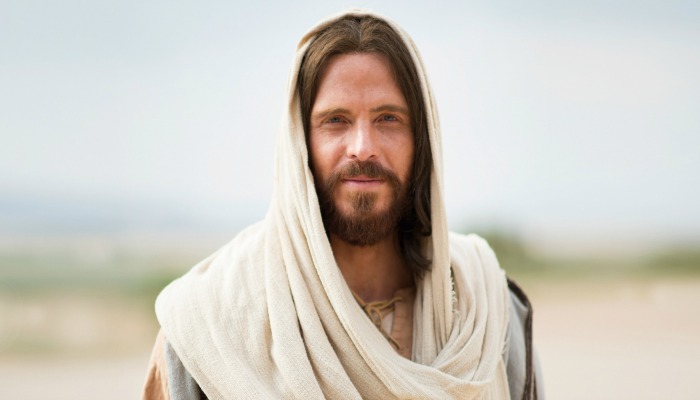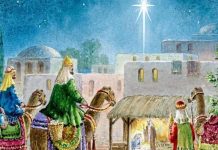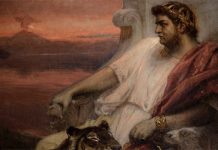
The God of the Old Testament can seem rather cruel. He destroys entire nations, initiates ancient gory rites of blood sacrifice among the Israelites, and even wipes out the vast majority of the human race in a flood.
Then in the New Testament, Christ comes to Earth and preaches about compassion, charity and serving God and man. His love is so great that He sacrifices Himself for mankind.
The difference is so mind-boggling that one Biblical scholar has even suggested that the Old Testament God and the New Testament God are two different deities.
How do we reconcile these two images? Are we really looking at the same God?
The God of the Old Testament is Jesus Christ
 Did you know that it is not Heavenly Father who is the God of the Old Testament, but Jesus?
Did you know that it is not Heavenly Father who is the God of the Old Testament, but Jesus?
In their testimony to the world of the Savior Jesus Christ, modern prophets declared: “He was the Great Jehovah of the Old Testament”.
The Joseph Smith Translation of Exodus 6:3 reads, “I am the Lord God Almighty; the Lord JEHOVAH. And was not my name known unto them?”
This is not a matter of two Beings who, as it turns out, were not one in purpose after all. When it came to disciplining the Israelites and other people of Old Testament Times, Jesus Christ was the acting parent.
God is Unchanging
 The Old Testament name of Christ, Jehovah, is “the covenant or proper name of the God of Israel. It denotes the ‘Unchangeable One’” (See the Bible Dictionary, “Jehovah”).
The Old Testament name of Christ, Jehovah, is “the covenant or proper name of the God of Israel. It denotes the ‘Unchangeable One’” (See the Bible Dictionary, “Jehovah”).
“[God] is the same from everlasting to everlasting, being the same yesterday to-day and forever; and that his course is one eternal round, without variation.”
-Lectures on Faith, Lecture 3, Verse 15
What does that mean, exactly?
We know that Christ “received not of the fulness at first, but grew grace for grace.” How could He grow and also not change at the same time?
When we talk about God being unchanging, we mean that His doctrine is eternally consistent. Elder Bednar has explained the difference between doctrine, principles, and applications. God’s doctrine is perfectly just, eternal, loving, and merciful. The applications of that doctrine can sometimes change according to the time and people, but the doctrine itself is always the same.
The changes in tone between the Old Testament and New Testament do not reflect Jesus Christ’s inconsistency, but what laws His people could live. For a time they were only ready for the Mosiac Law, and God’s discipline reflected that. But the Mosaic Law was not complete doctrine. The coming of Christ marked the time when God’s people were ready for a Higher Law.
“…as Far as it is Translated Correctly”
 You probably know this phrase. It’s from the eighth Article of Faith, which partially reads: “We believe the Bible to be the word of God as far as it is translated correctly.”
You probably know this phrase. It’s from the eighth Article of Faith, which partially reads: “We believe the Bible to be the word of God as far as it is translated correctly.”
As much as we Mormons really do love the Bible, we also know that it has been around for a long time. Throughout the years, it has been copied onto handwritten manuscripts and translated into several different languages. Both purposeful and accidental errors of translation were made, and precious truths were lost.
Joseph Smith, a prophet of God, provided his own inspired corrections of hundreds of these Biblical errors. If God’s actions in a Biblical story don’t seem to be consistent with his character, the first thing to do is check for the Joseph Smith Translation (JST) in the footnotes.
If you prefer, you can even find the Joseph Smith Translation version of the Bible on Amazon, which inserts all of Joseph Smith’s translations directly into the King James Version of the Bible.
Mercy and Justice
If you are asking yourself how the God of the Old Testament and the God of the New Testament could be the same, chances are that what you are really looking for is evidence of God’s love and mercy in the Old Testament.
Jesus Christ balanced mercy and justice perfectly throughout the Old and New Testaments. This is sometimes difficult to comprehend with a limited human perspective. If you look at Old Testament stories through the proper lens, however, you’ll start to see that balance.
You may want to ask, “How does this particular story demonstrate Jehovah’s wisdom, love mercy, and justice?”. As you search, ponder, pray, you will start to see the answer.
Even looking at the first book of the Old Testament alone, you’ll find countless stories of God’s balance of judgment and compassion. We only have the space for one here.
If you have questions about other Old Testament stories, you may want to check out these podcasts, “Troubling Images of God in the Old Testament” for further insights.
Noah and the Flood
 This is more than just the story of a vengeful God punishing his children.
This is more than just the story of a vengeful God punishing his children.
Jehovah “saw that the wickedness of man was great in the earth and that every imagination of the thoughts of his heart was only evil continually.” Notice that verbiage: all of man’s thoughts tended toward evil continually.
So He destroys them. Say what?
This wasn’t a hasty decision. If you recall, He did first send generations of prophets to these people pleading and warning them to repent. The people didn’t listen.
Despite that, God didn’t hold a grudge. He didn’t hate these people. On the contrary, He wept for their loss.
We read in Moses 7:28 that “the God of heaven looked upon the residue of the people, and he wept.”
Enoch, a contemporary of Noah, asked him: “How is it that the heavens weep, and shed forth their tears as the rain upon the mountains?…How is it that thou canst weep, seeing thou art holy, and from all eternity to all eternity?”
God’s answer? “They are the workmanship of mine own hands.”
When we suffer, God suffers. When we forsake Him, God feels that pain. He is the God who weeps. He is a grieving parent with billions of imperfect, unrighteous children. Yet with all this, His hand is stretched out still.
Enoch was moved and felt the loss of humanity himself. And how did Jehovah comfort him? He pointed Enoch toward the meridian of time, to when He Himself would come and redeem mankind.
Part of the Savior’s mission would be to preach to the dead — including those who had passed away in the flood. In the three days between his crucifixion and resurrection, Christ visited those in Spirit Prison. Modern revelation tells us that the purpose of this visit was their redemption. There may have been many in Noah’s time who did not get a fair opportunity to gain a testimony or repent during their lives. If so, the benefits of the Atonement were not lost to them in death.
Jehovah also covenanted that He would never destroy the earth by flood again. He created the rainbow as a symbol of this promise. There is a missing piece to this covenant symbol which is restored in the Joseph Smith Translation. Jehovah also promised Enoch that when men keep all His commandments, Zion would then return to the earth.
There is always a message of hope and redemption in the pages of the Old Testament, however hidden it may seem. We need only look at it with the eyes of faith to see it.





